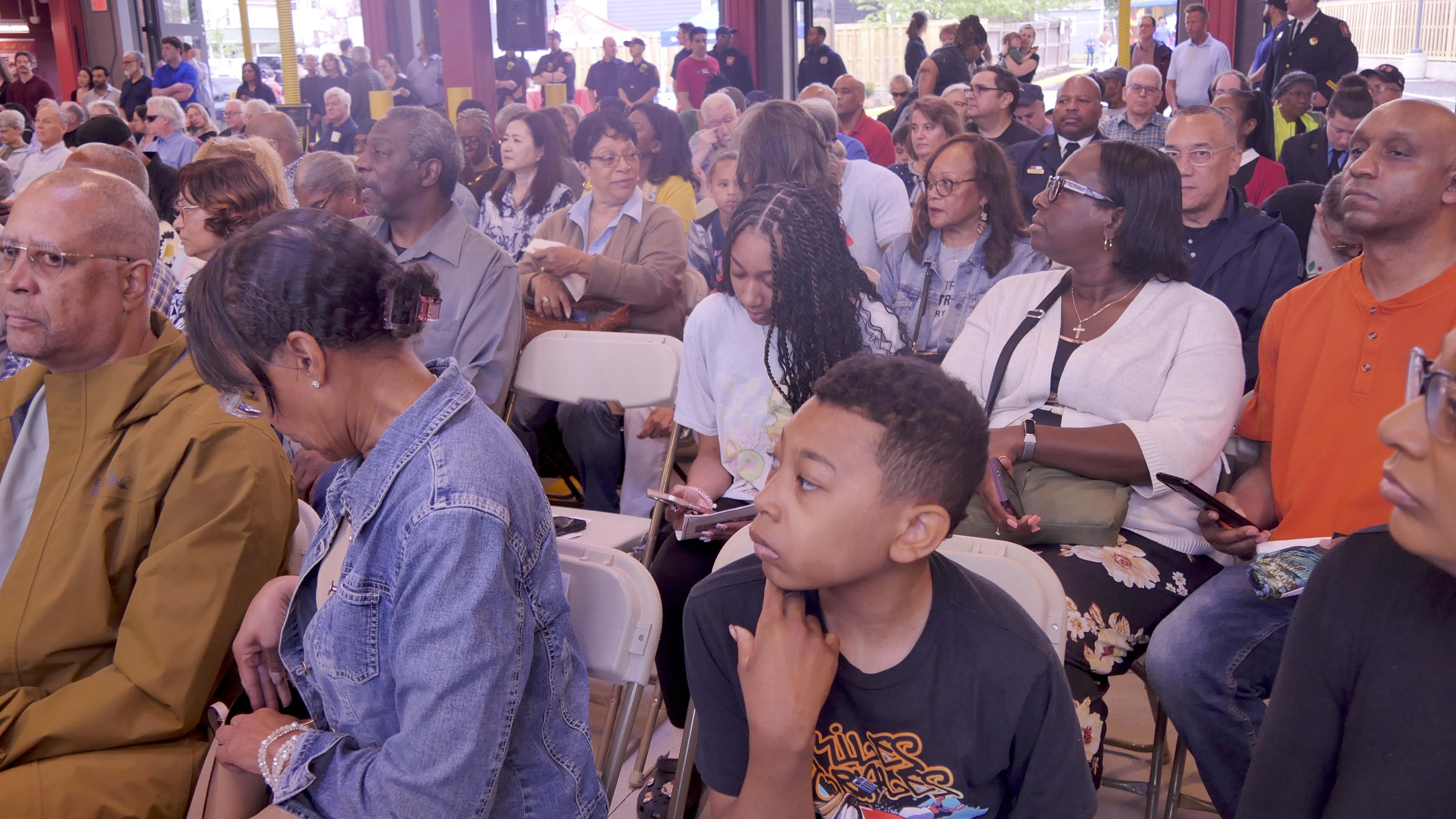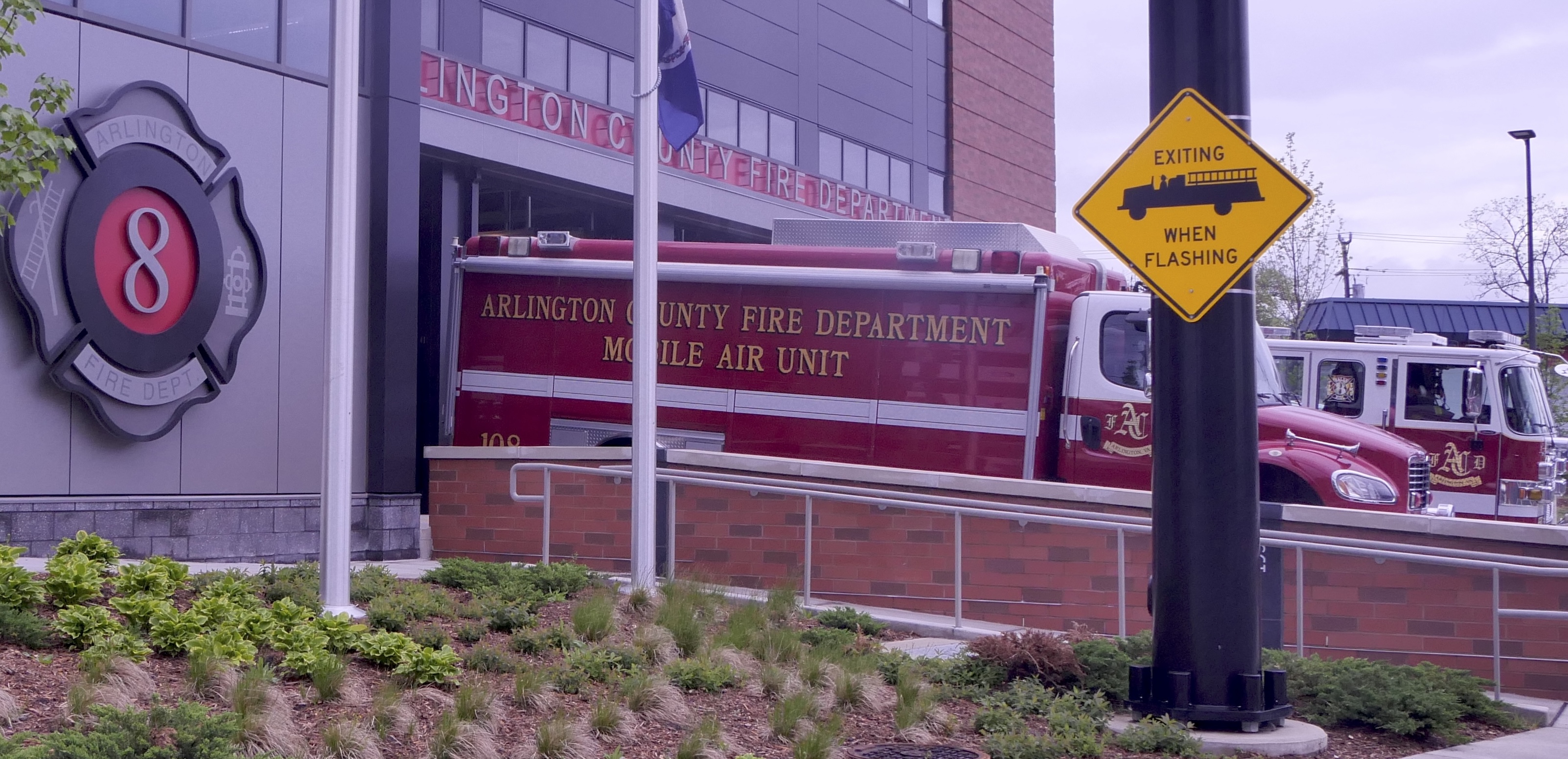Friday, May 9, 2025
The apparatus bay of Fire Station Number 8 was packed with descendants of the original Black volunteer firefighter department that started in 1918, members of the local neighborhood, friends and local officials. As Arlington County Fire Chief David Povlitz observed, “The amount of smiles and hugs here today is off the charts, amazing. It signifies the struggle, determination and progress.”
Noah Simon, chair of the Citizen’s Task Force to make a recommendation on the fire station, pointed out after 3,218 days the new fire station had become a reality, and “I’ve counted every one of them. I’m probably the most excited person up here.” Simon said he saw it as a great challenge and heard unbelievable stories along the way both of racism and of heroism.
Libby Garvey was the Arlington board chair at the time the project began to replace the aging fire station and
 Fire station number 8 holds a grand opening event on Saturday, April, 26.
Fire station number 8 holds a grand opening event on Saturday, April, 26.
“Amen” reverberated from the back of the room.
The fire station had its beginnings back in 1918 when the Black neighborhood of Halls Hill was unable to get service from the White fire stations in the County. So they started their own volunteer group in a small garage with just a few people and no funding or equipment from the county. As time went on the Black volunteer fire department received fewer resources than the white volunteer companies in Arlington and were excluded from the transition to a career-based system in 1940 until 1951. Then Julian M. Syphax and Alfred W. Clark became the first paid Black firemen in Arlington County.
But although each speaker at the Saturday ceremony told the story in a slightly different way, it became clear “the fire station was not about the building but about the people” as stated by Greg Emanuel, Arlington County Director of the Department of Environmental Services. It was considered a safe place in the community. “It was a beacon of light, a beacon of hope.” It was a gathering place with the only public telephone and a soda machine.
Del. Patrick Hope recognized Hartman Reed, the last living member of the first paid Fire Station Number 8 team with a plaque representing his courage and commitment. In addition, Jerome Smith, the last living station volunteer firefighter was recognized with applause by the attendees.
Wilma Jones, a lifetime resident of Halls Hill and the chair of the John M. Langston Civic Association remembers that the fire station was truly a community gathering place. People in the neighborhood lined up at the fire station with their ration books during World War II to get their sugar. She adds that the history and legacy were important reasons behind retaining the present location for the fire station, but that the data backed it up. “We were growing faster than the area where they wanted to move us, and that location didn’t want the fire station relocated there.”
Takis Karantonis, current chair of the Arlington County Board, said the initial fire station was located on the grounds of a former plantation 150 years prior where free slaves and a few families who could afford a home built a community and then were denied services from their own community. “They got together and said, ‘We’ll fix that.’ Thank you so much for that. It inspires me every day.”
Povlitz described the new, state-of-the-art 20,000 square feet fire station with three levels and three engine bays. “It is safe and comfortable to meet the needs of the first responders with modern training and rest spaces.” The facility has a decontamination zone where firefighters throw in their uniforms to wash which is “huge” to guarantee their safety, and a pharmacy if they need immediate access for an emergency. Povlitz says in 2024 they answered 2,100 EMS calls.
In closing Povlitz says, “Please check your smoke detector, and if you hear a chirp please make a change” to laughter from the crowd.
Mercedes Clark Baker, self described as daughter number four of the first Black captain Alfred Clark, ended the day’s remarks. She said the powerful men and women who made this happen “had a lot to overcome but they didn’t know they couldn’t do it.” She called the names of the original 14 firemen and asked the families in attendance to be recognized.
Every speaker thanked every other speaker and everyone else and rightfully so because it had taken a lot of people to overcome a lot of obstacles, both physical and political, to make this happen.
Some small children who couldn’t wait for the program to end and the family activities to begin were peering through the glass windows at the ceremony while others were exploring the fire engines lined up outside. After the conclusion of the event, tours were offered along with a slice of cake baked by the Heidelberg Bakery across the street.
